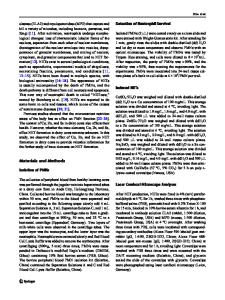Effect of Copper Addition on the Cluster Formation Behavior of Al-Mg-Si, Al-Zn-Mg, and Al-Mg-Ge in the Natural Aging
- PDF / 1,469,711 Bytes
- 7 Pages / 593.972 x 792 pts Page_size
- 85 Downloads / 275 Views
TRODUCTION
IT is well known that the mechanical hardness of Al-Mg-Si (6xxx series)[1] and Al-Zn-Mg (7xxx series)[2] alloys are strongly related to microstructure and number densities of solute element precipitates, which are formed during natural aging (NA) and artificial aging (AA) after solution heat treatment (SHT) followed by a quick quench in water (SHTQ). The microstructure of the precipitates has been intensively studied via transmission electron microscopy (TEM)[3–6] and atom probe tomography (APT)[7–12] to reveal the age-hardening mechanism. Differential scanning calorimetry (DSC)[13–15] has been widely used to investigate cluster formations and precipitation processes. Positron
DAICHI HATAKEYAMA, KATSUHIKO NISHIMURA, KENJI MATSUDA, TAKAHIRO NAMIKI, SEUNGWON LEE, NORIO NUNOMURA, and TETSUO AIDA are with the Graduate School of Science and Engineering, University of Toyama, Gofuku, Toyama, 930-8555, Japan. Contact e-mail: [email protected] TEIICHIRO MATSUZAKI is with the RIKEN Nishina Center for Accelerator Based Science, RIKEN, Wako, Saitama 351-0198, Japan. RANDI HOLMESTAD is with the Department of Physics, NTNU, Høgskoleringen 5, Trondheim 7491, Norway, SIGURD WENNER and CALIN D. MARIOARA are with the Materials and Chemistry SINTEF, Høgskoleringen 5, Trondheim 7491, Norway. Manuscript submitted April 11, 2018.
METALLURGICAL AND MATERIALS TRANSACTIONS A
annihilation lifetime spectroscopy (PALS)[16–18] and muon spin relaxation spectroscopy (lSR)[19–21] have been used to investigate the vacancy and clustering behavior. Despite these studies, the precipitation processes, especially the early stages of clustering at NA, are still not fully understood. Recent comprehensive reviews[1,22] of solute and trace element effects on the natural aging phenomena suggest that there are at least five stages of clustering at NA in the Al-Mg-Si alloys. After SHT and quenching, within a few minutes there are plenty of free excess vacancies (stage 0), but it has been quite difficult to obtain reliable data to confirm this stage. In the next stage (stage I), solute–vacancy pairs start to form and build up to solute-complexes at the end of this stage; solute-rich clusters in stage II and solute co-clusters, such as Si-Mg clusters, in stage III are expected to form. NA time evolutions of mechanical hardness and electrical resistivity from the stage I to III have been well correlated with PALS and/or DSC observations.[22,23] In stage IV, coarse or ordered clusters possible emerge, often observed by APT. The complexity of the precipitation process is due to significant sensitivity of solute clustering kinetics to the solute/trace element concentrations and NA temperatures, which dominate the duration and activation energy of each stage.[1]
In the early stages of clustering, vacancies are considered to play an important role. It has been frequently observed that Cu addition to Al-Mg-Si delayed the Si/Mg-vacancy pairing and Si-complex/cluster formation (stage I),[10,24,25] implying that Cu has a relatively larger binding energy wi
Data Loading...











